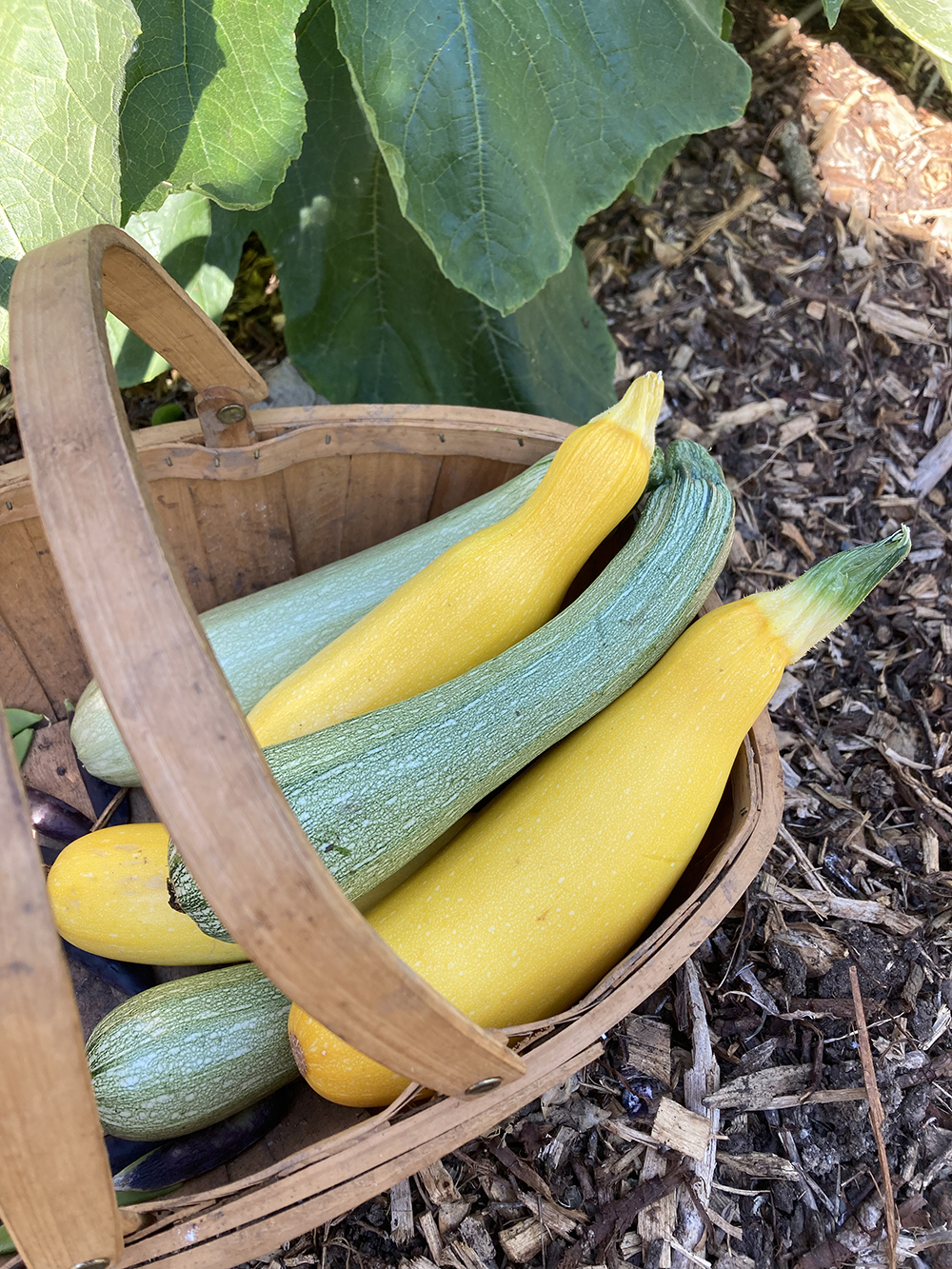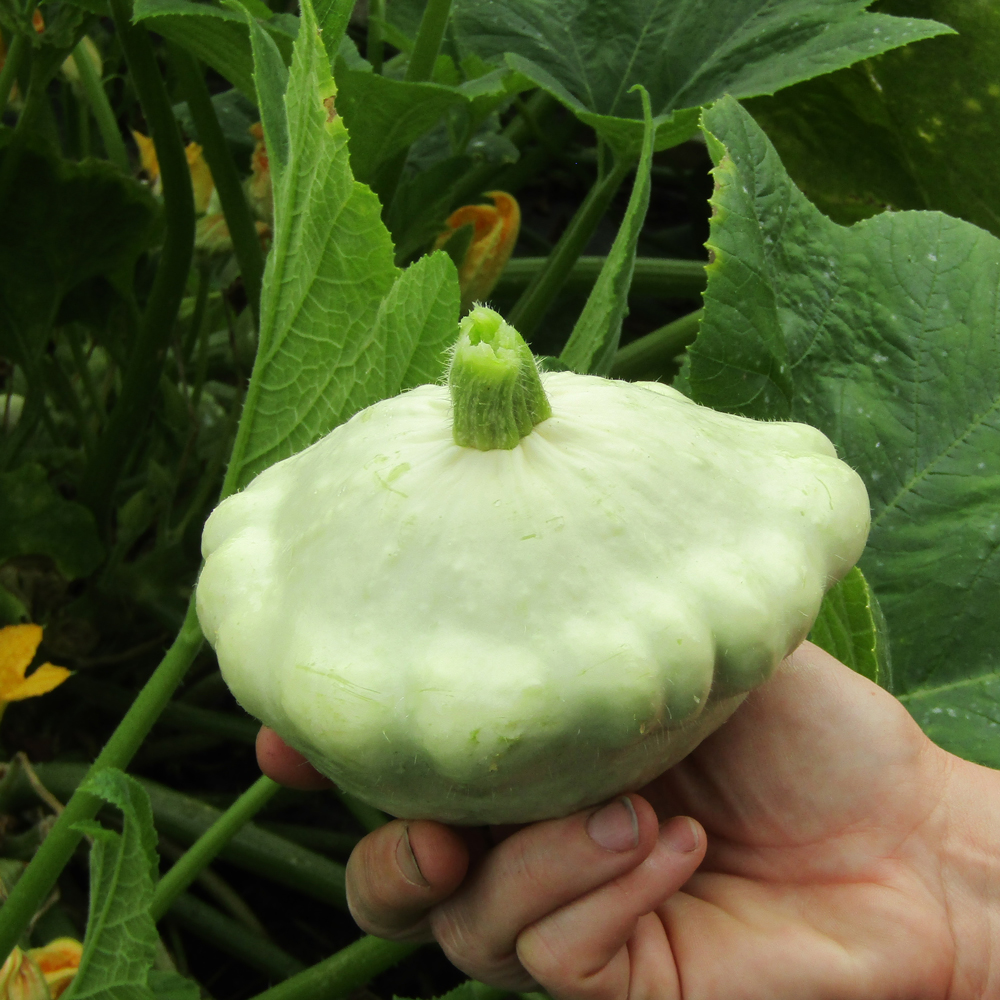We have a great range of different varieties when it comes to growing squash and courgettes, and of course it can be tempting to grow them all.
One option, if you don’t have space for everything you want to grow, is to club together with a friend and share out the plants. That way you get to try lots of different varieties without overflowing with more courgettes than you can manage. But, if you’re not dividing plug plants with friends, the following might help you to choose.
Courgettes & Summer Squash
These tend to grow exceptionally well, and as long as the growing conditions are right (they are easy to look after) and there are plenty of bees in your plot, then you should find you get a very generous crop. Three plants is usually enough for a household of up to four people, but if you want to grow more than one variety, there’s no harm in planting an extra set of three plants and harvesting more often as baby courgettes/squashes.

Traditional Courgettes
We have three varieties – Genovese has a pale, mottled skin, Green Bush is a more classic dark skinned variety and Atena Polka is a lovely golden skinned courgette. All three grow to a very similar size, so there is no benefit choosing one over the other in terms of saving space in your plot and the choice really comes down to which colour you would like to harvest. Atena Polka crops a little later in the season, and as a very broad generalisation we’d suggest that Green Bush and Genovese are a little more reliable, but that golden yellow skin is very appealing to grow! In terms of taste, our favourite is probably Genovese, but it is a very close call and you won’t go wrong with any of these three.

Patty Pan Summer Squash
Ours is a Custard White bush variety of patty pan summer squash – being a bush variety means that the plant remains fairly compact rather than trailing. You can expect a good crop from each plant, harvesting regularly through summer. The flavour is similar to a courgette, but the texture is slightly different – they hold together a little better, and are actually really great for slicing and grilling on a BBQ. They store quite well for a week or so after harvesting (in a cool room) and look lovely lined up on a windowsill in the kitchen.

Tromboncino Albenga
This unusual variety can be grown to harvest in summer, like a courgette, or you can leave them on the plant and harvest in autumn like a winter squash. The pros to this variety is that the fruits are really fun-looking – if you are growing with children, or if you want to grow something that is fun to give to friends and family, it’s an easy win. You also get an abundant crop. This is a trailing variety, so it will need space to sprawl across the ground or climb a trellis/fence. The flavour is quite mild but they are really fun to grow and with good seasoning and some homegrown herbs you can enjoy them in either summer or autumn which makes it quite a useful hybrid if you don’t have space for growing both courgettes and winter squash.
Winter Squash & Pumpkins
Our varieties this year are all trailing varieties which will need a little space to trail along the ground or climb a trellis or fence. If you don’t have space for this, we would definitely recommend sticking to courgettes.
The two key choices are around size and flavour.

Small & Medium Squash Varieties
Sweet Dumpling (pictured) is very good for stuffing and roasting, and makes a good choice for households of 1-2 people if you want to cook up a quick soup or add some squash to a risotto without having loads of leftover squash to use up.
It is a very sweet variety, so a great option if you’re partial to some pumpkin pie or baking muffins!
Waltham Butternut Squash grows best in the warmth which helps it ripen up in time, so a great option for those with a suntrap of a garden or who are growing in a polytunnel. It’s a tasty option with all the qualities you associate with a classic butternut. If you live far in the north, or if your garden tends towards cooler temperatures, we’d suggest going for Uchiki Kuri instead which ripens a little faster.
Uchiki Kuri is quite sweet and nutty in flavour, perhaps a little more starchy in texture than the butternut. It stores so well, and looks fab on the winsowsill over autumn and winter, so a really great option. You may find some grow to around the size of a football, while others are smaller – it’s quite nice to have this range to choose from when it comes to cooking.

Large Squash Varieties
These are so impressive to grow, and if you want to grow a whopper, then you should definitely try these as they are much tastier than pumpkins. They store really well, and whilst it is almost impossible to use a whole squash for one meal, you can easily cut off a wedge with a suitably sharp knife, and use them up in chunks over a few days.
There’s not a huge difference in flavour between our varieties, so we’d recommend choosing the one you like the look of the most.

